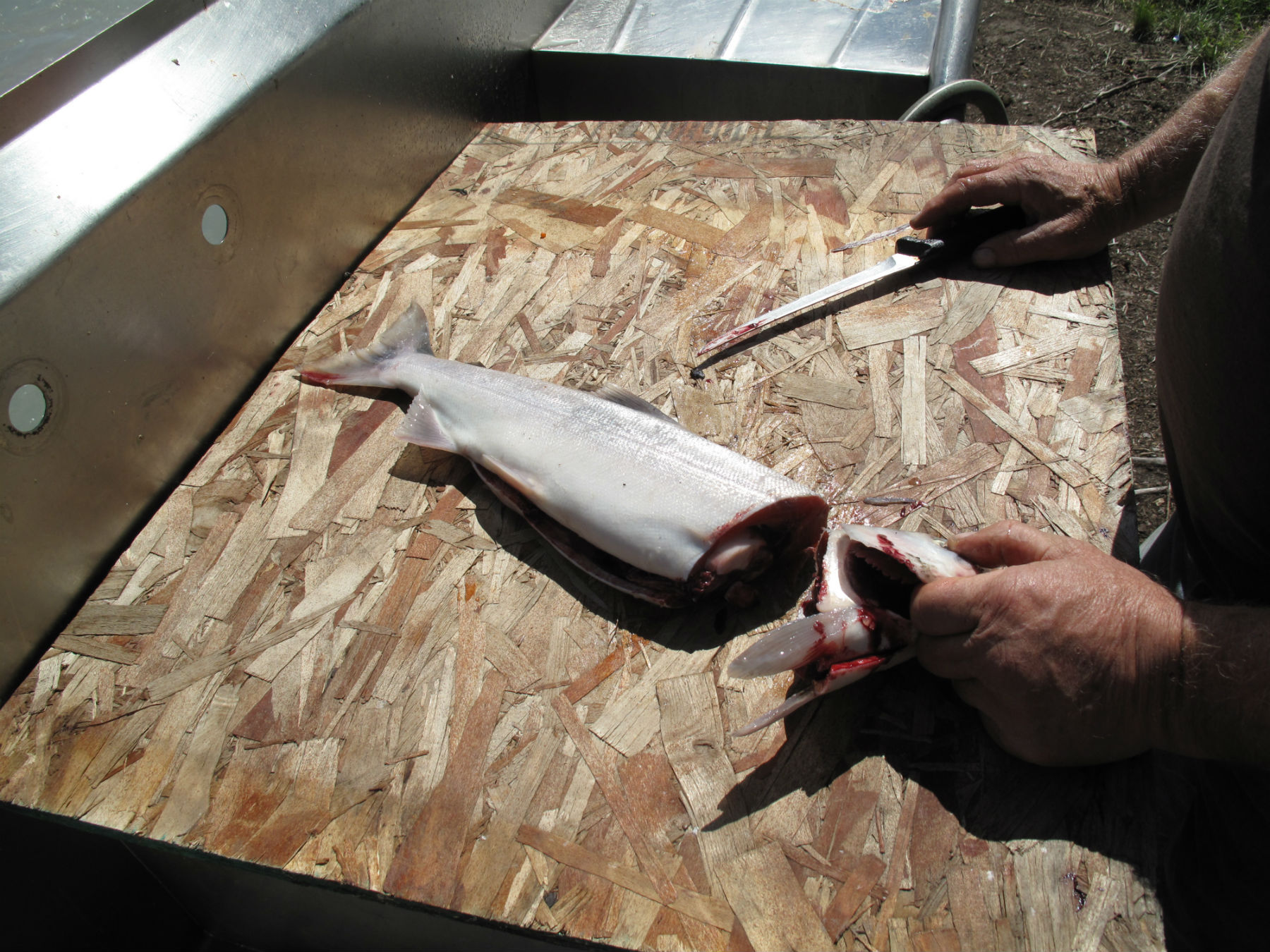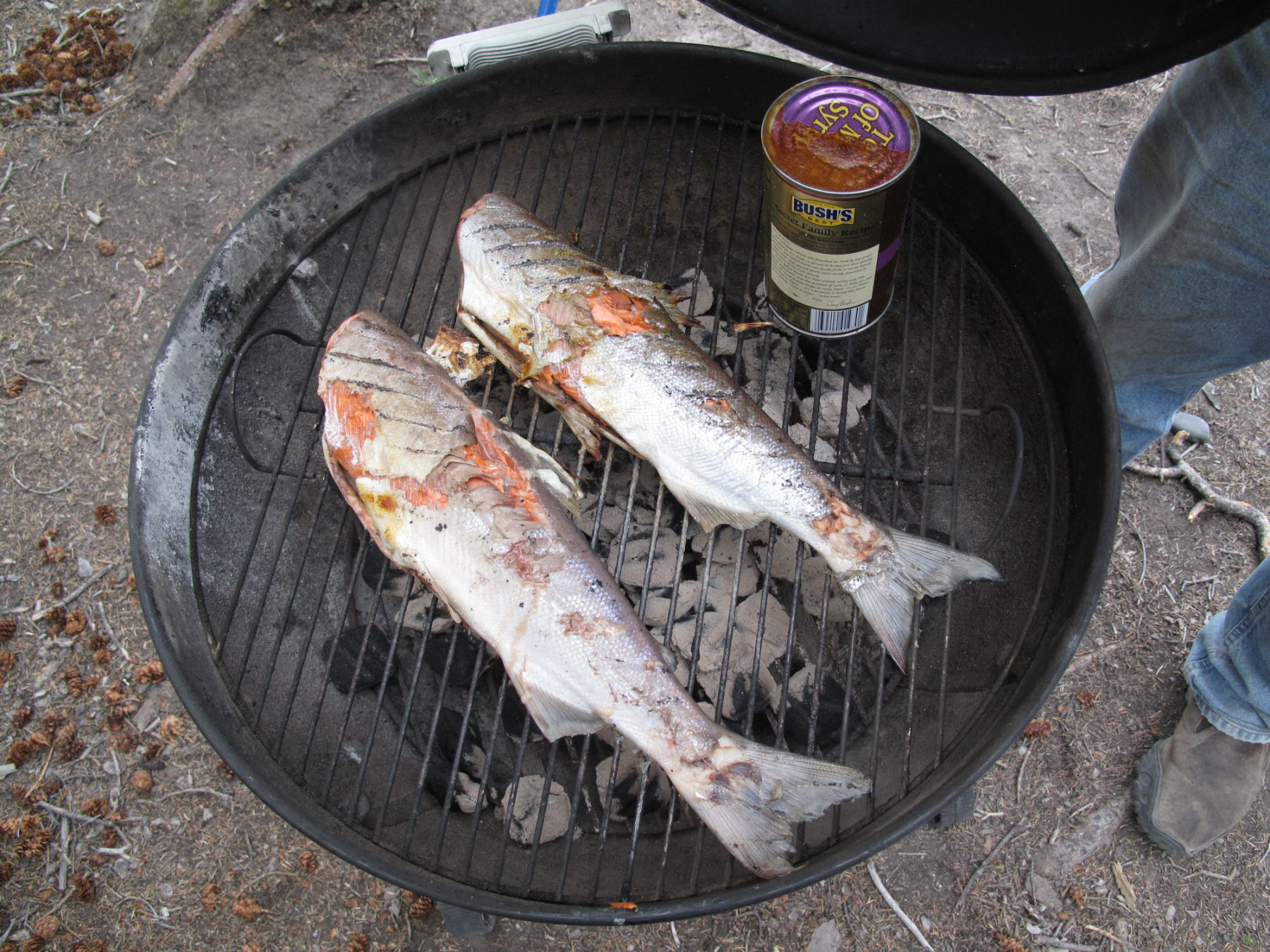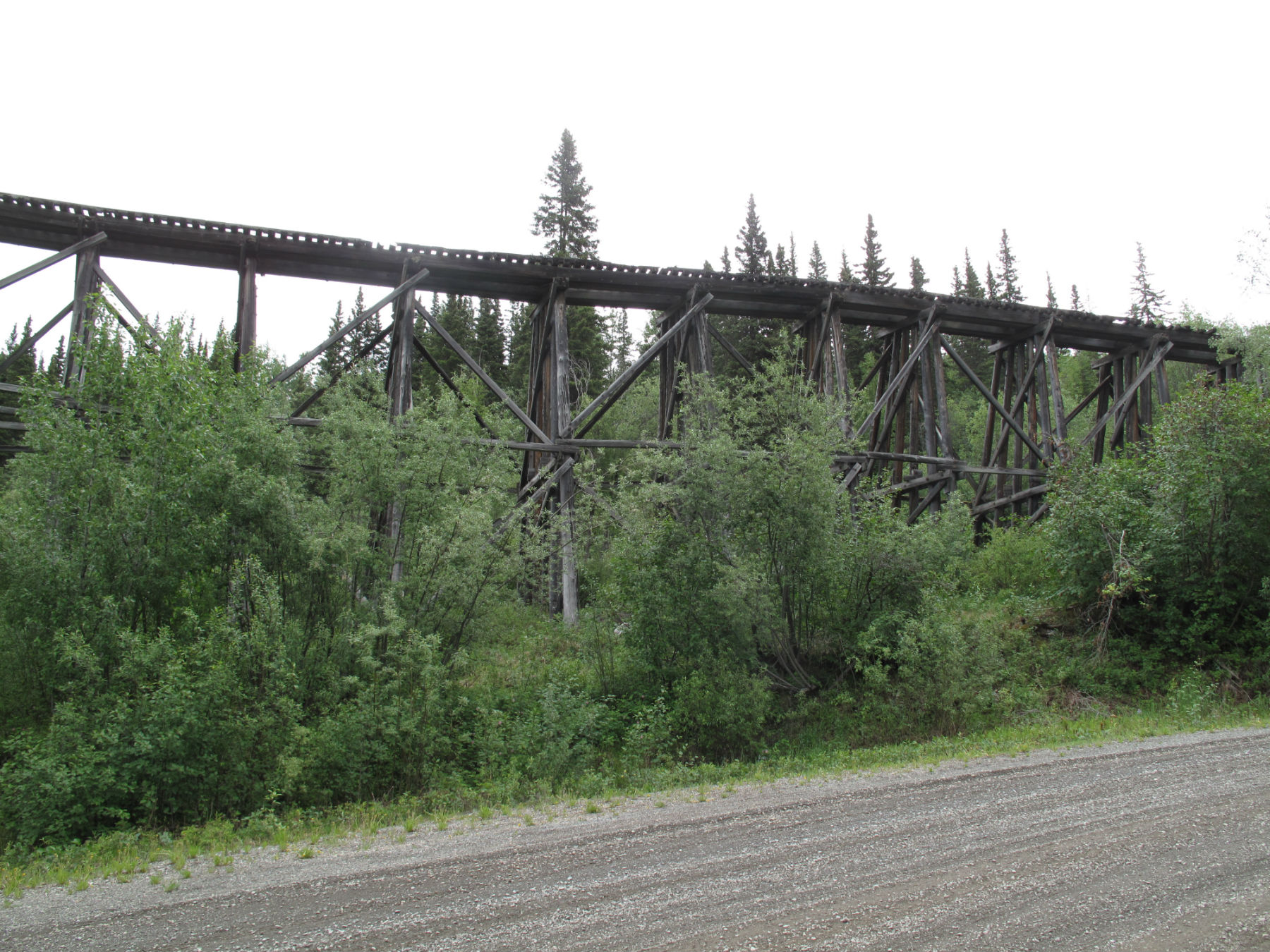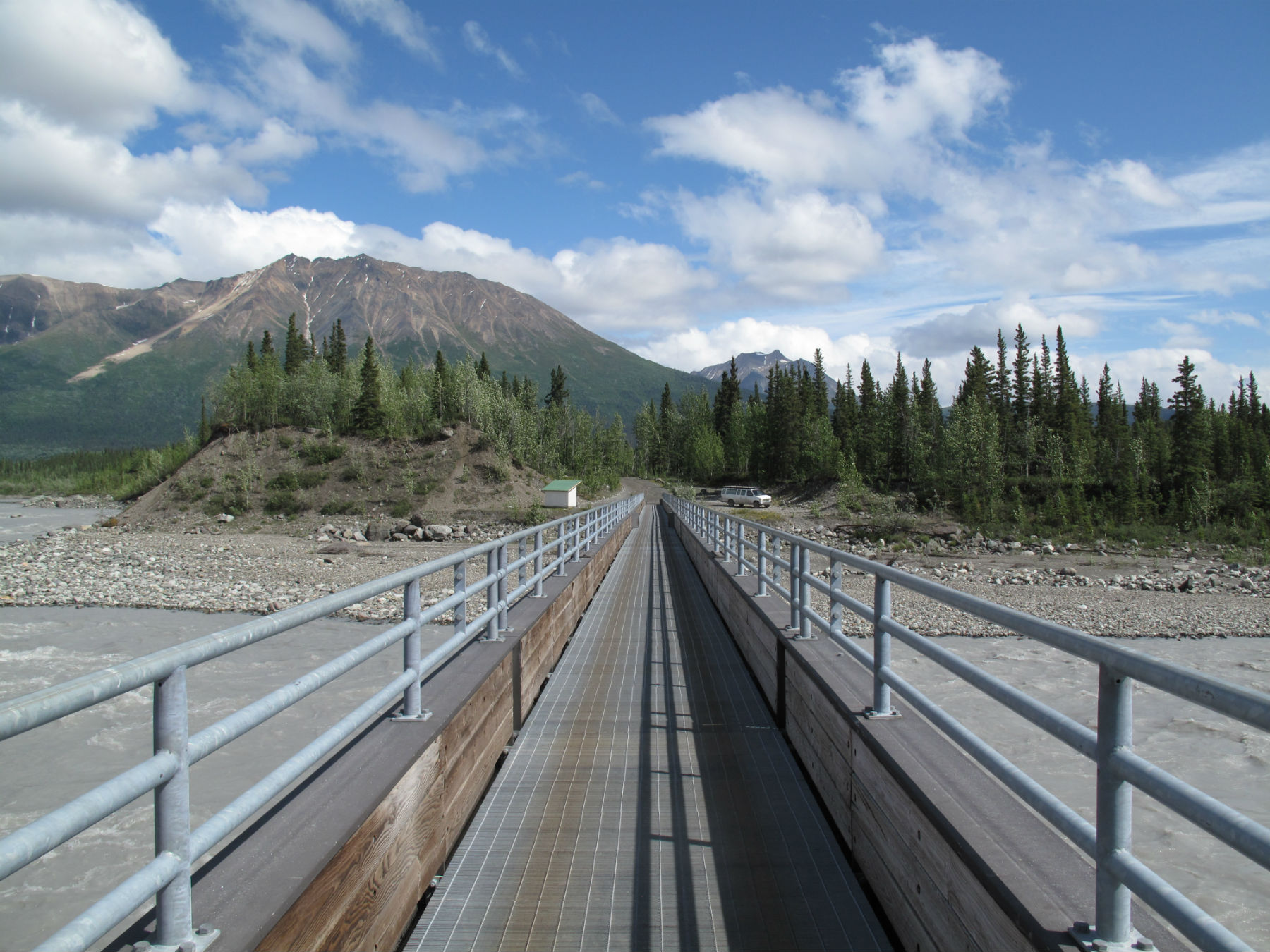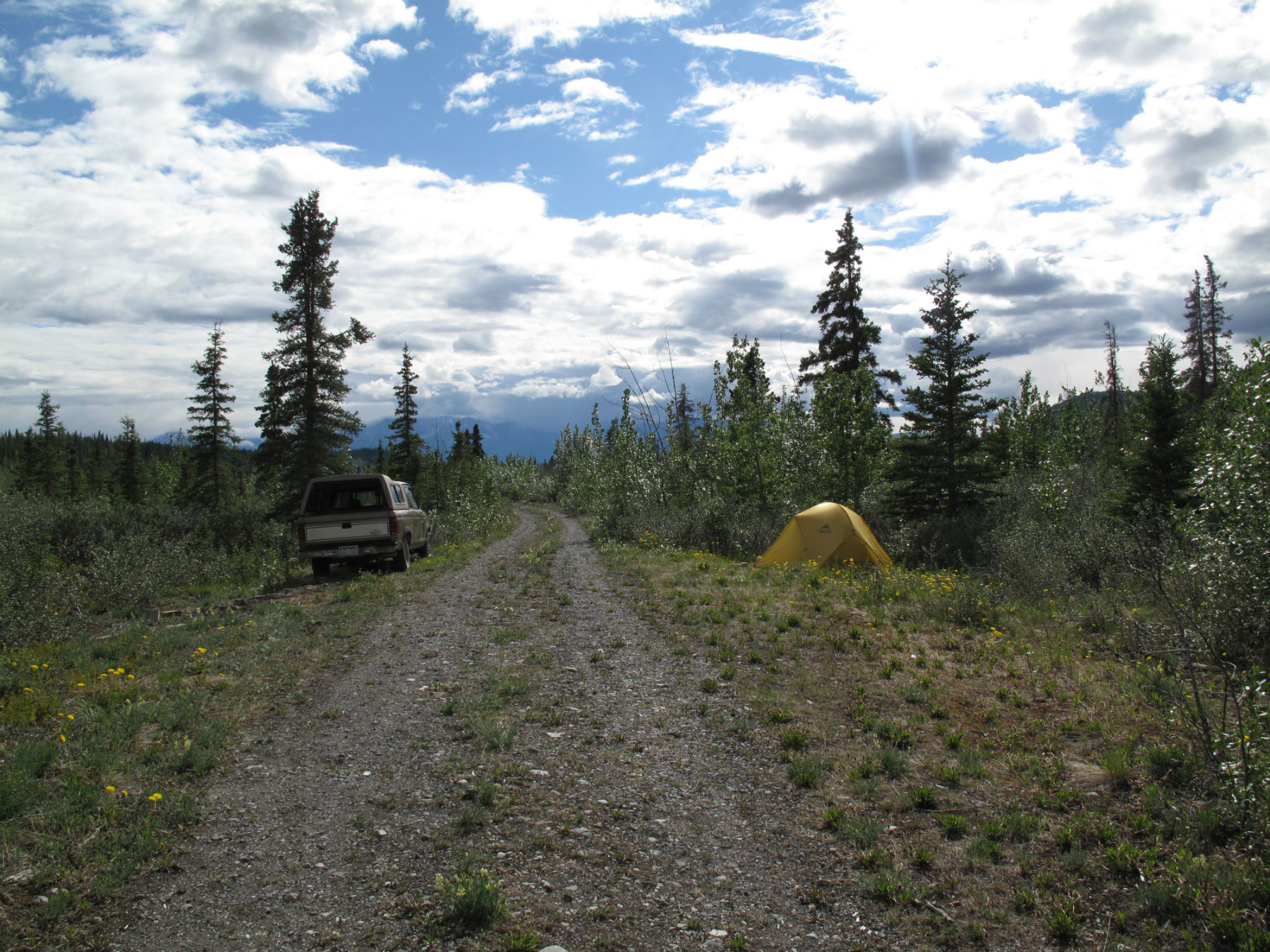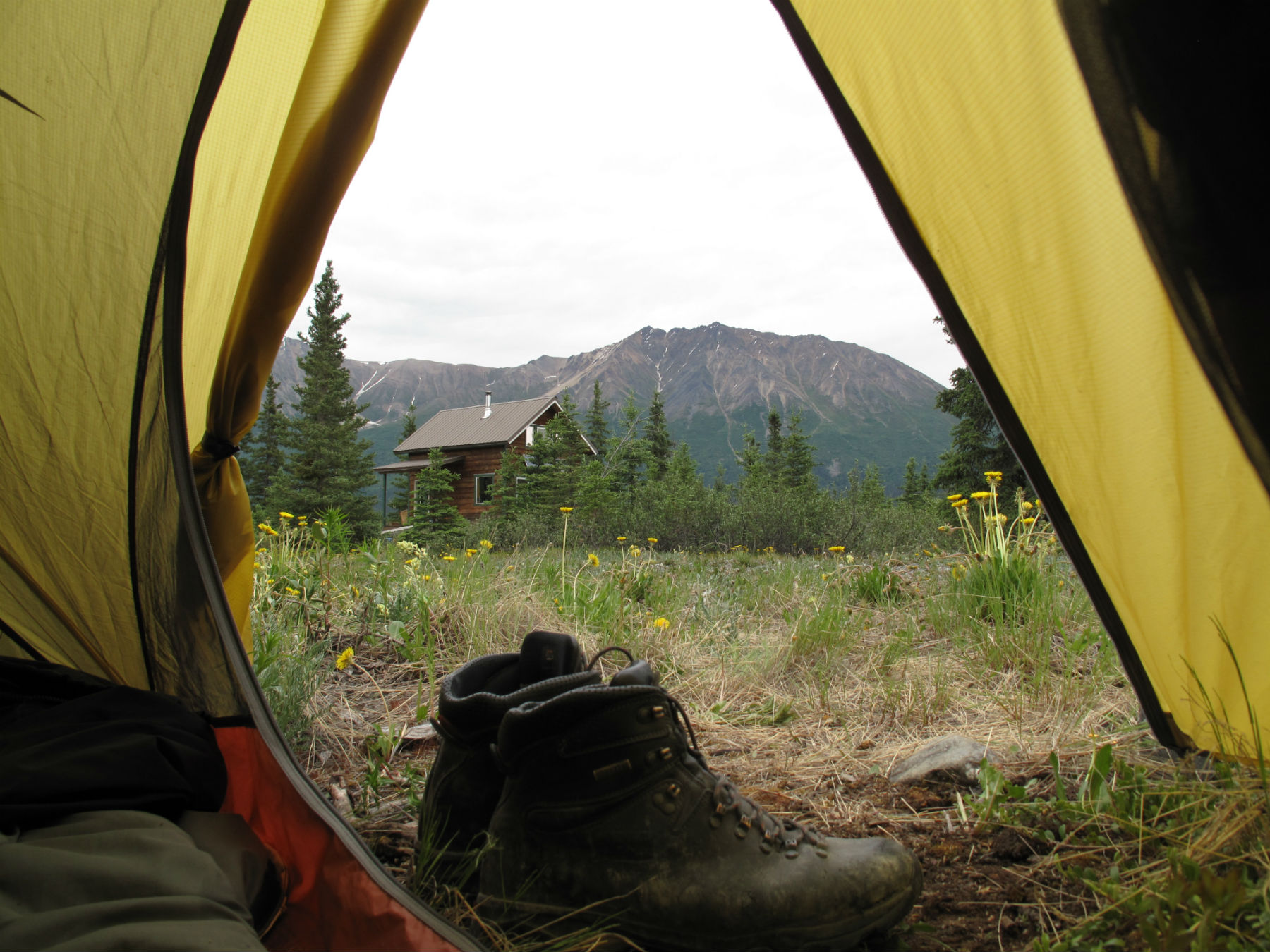I wanted to go to Nabesna. I wanted to camp in the woods and go hiking and be in a place with very few people and very large mountains. To this end, I went to the National Park visitor centre and borrowed a bear-proof food container, which you have to have if you’re going to camp in the park. Then I walked outside, stuck out my thumb and within twenty minutes got picked up by Patrick, a guy in his fifties in a battered old RV.
“Where are you headed?” I asked him when he pulled over.
“Chicken,” he said.
“Ooh,” I said. “Can I come?”
“Sure,” he said. “Get in.”
The town of Chicken is famous for being a strange place. It’s way up north, not far from the Canadian border, but not on the Alaska-Canada highway which takes the majority of traffic in the region, so it exists in its own little bubble. The town was actually supposed to be called Ptarmigan after the Alaskan state bird which is common in the area but the semi-literate gold miners who had founded the town couldn’t spell Ptarmigan so they went with Chicken because it was easier. The year-round population of Chicken is 17.
I had tried, and failed, to get to Chicken twice in my life already. The first time was on my bicycle tour when I was twenty. I wanted to cycle up there from Tok but forest fires had closed the road. The second time was on a hitchhiking trip to the Canadian Arctic a year later. I wanted to hitch the Top of the World highway from Dawson City but forest fires had closed that road too. Now, despite my intention to go to Nabesna, and despite the large, heavy bear-proof food container I had just squeezed into my rucksack, I couldn’t say no to that ride.
“Why are you going to Chicken?” I asked Patrick as I threw my stuff into his RV.
“There’s a bluegrass festival there this weekend,” he said.
“Cool,” I said.
“It’s called Chickenstock.”
I laughed and we were on our way. We didn’t talk much on the six-hour journey. Instead, we listened to Patrick’s eclectic music selection. At one point, I told him I liked what was playing. “Who is this?” I asked.
“Gary Burton,” he said. Evidently, I looked blanker than I should have done at the name. Patrick looked sideways at me. “Are you a jazz fan?” he asked.
“I like it but I don’t listen to it much so I’m not very knowledgeable,” I said honestly.
“He’s an elder,” he explained. “A vibraphone player. He inducted a lot of the younger generation into the fold.”
We arrived at Chickenstock a little after ten pm in the beaming sunshine. On the festival stage, a man in a chicken suit was leading a crowd of enthusiastic revellers through the chicken dance. Patrick went off to park his RV and I climbed up a nearby grassy knoll to set up my tent.
As I was setting up my tent, I got chatting to the lady camped next to me, who was from relatively-nearby Fairbanks. She pointed at the Chicken Saloon opposite our tents. “They’ll fire off a cannon every so often,” she told me. “It’ll be full of people’s underwear.”
“Good to know,” I replied.
Near my tent was all sorts of chicken-related stuff and a few gold-mining buildings.

Yes, that’s a giant chicken and a sign listing the distances to other places in the world with chicken-related names.
I sat on the hill and listened to the music for a while, then went for a walk to stretch my legs after the long drive. It didn’t take me long to see most of Chicken.
Feeling pretty tired, I went to bed around 2 am, though I was wakened every so often when the cannon went off with a mighty BOOM and a raucous cheer went up from the bar.
I spent the next day at the festival, listening to good music, making friends, including Danny and Tom who had flown out from Anchorage in Danny’s little plane and who will appear again in this story later, and playing with rubber chickens in the sunshine. Before the day was out, I bought myself a lousy t-shirt to commemorate the occasion.
Total distance hitchhiked: 1,432 km.
Total number of rides: 11.









